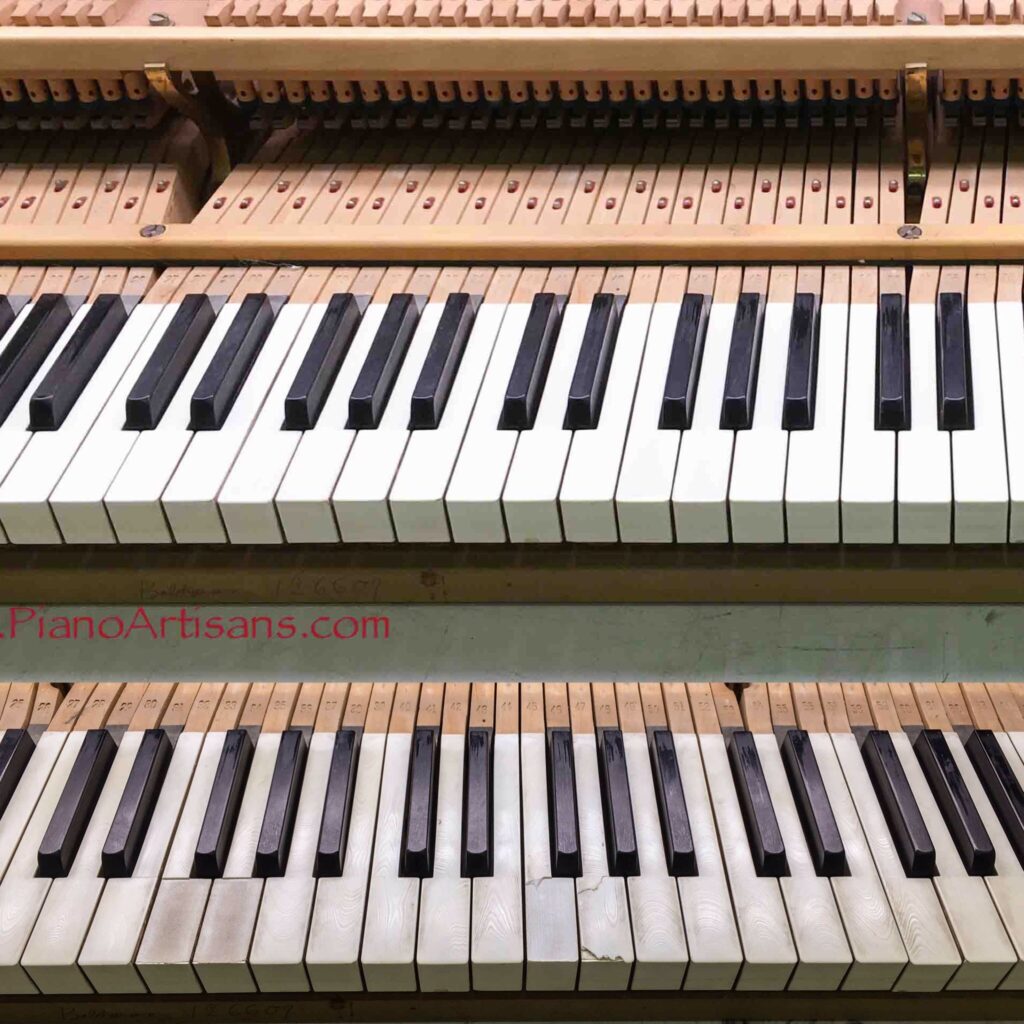Ivory has a long history of use in the creation of piano keys, stemming from the material’s durability and aesthetic qualities.
In the early years of piano making, around the 18th and 19th centuries, the keys were made primarily from ivory and ebony. Ivory, derived from elephant tusks, was particularly favored for its beauty and feel. The cool, smooth texture of ivory provided an ideal touch for pianists. It also naturally absorbed moisture, which was useful for preventing fingers from slipping off keys during performance.
However, ivory is an organic material, so over time, it tends to yellow, crack, or chip, especially if not cared for properly. As a result, piano keys may require replacement or restoration.
Additionally, the harvesting of ivory became a cause for concern due to the resulting decline in elephant populations. In the 20th century, the push for wildlife conservation and ethical sourcing of materials led to restrictions and bans on ivory trade in many countries. The Convention on International Trade in Endangered Species (CITES) has specifically addressed the issue of ivory trading.
As a result, by the mid-20th century, piano manufacturers began to transition to alternatives such as plastic and other synthetic materials. These modern materials are more durable, easier to maintain, and are ethically and sustainably sourced.
Despite these changes, some vintage pianos with original ivory keys are still in circulation today. These instruments are often highly valued for their historical and aesthetic charm, though they require special care to maintain. It is important to note that while ivory restoration is permissible, the trade of new ivory parts is heavily restricted or outright banned in many regions of the world due to conservation efforts.
Here’s one of our before and after Ivory Restoration.

